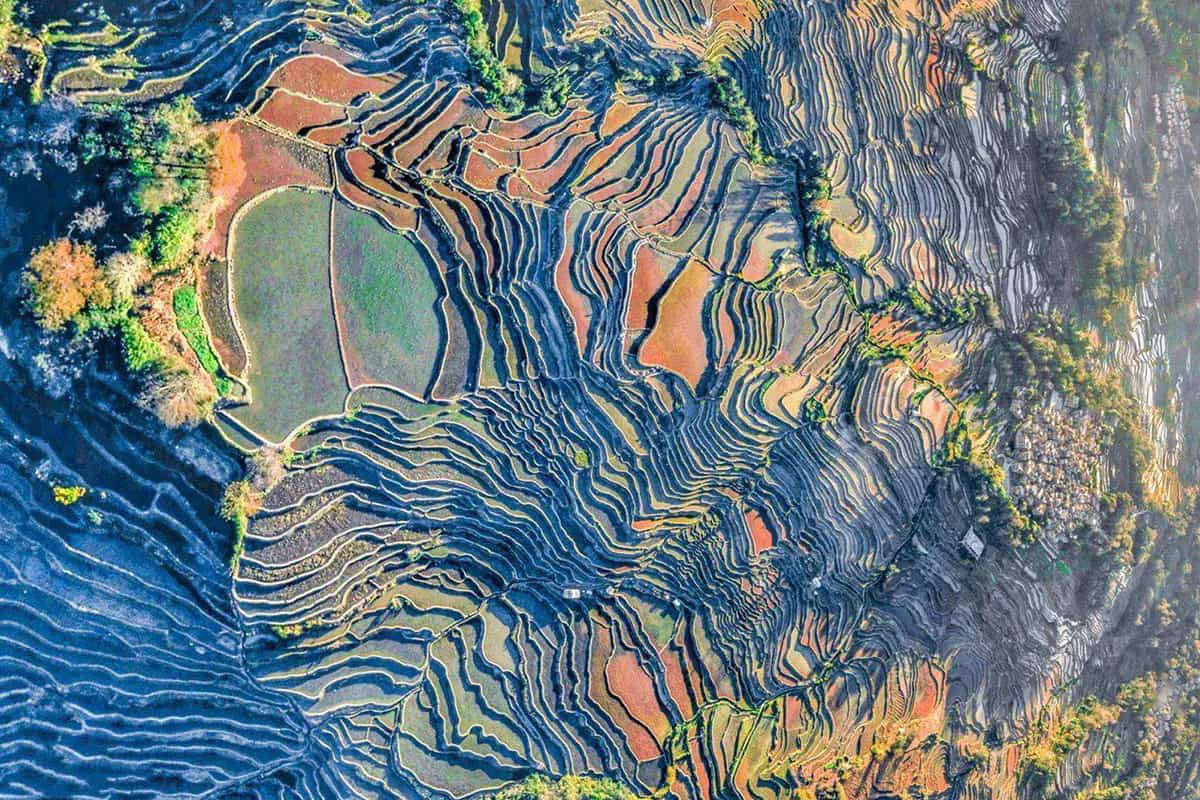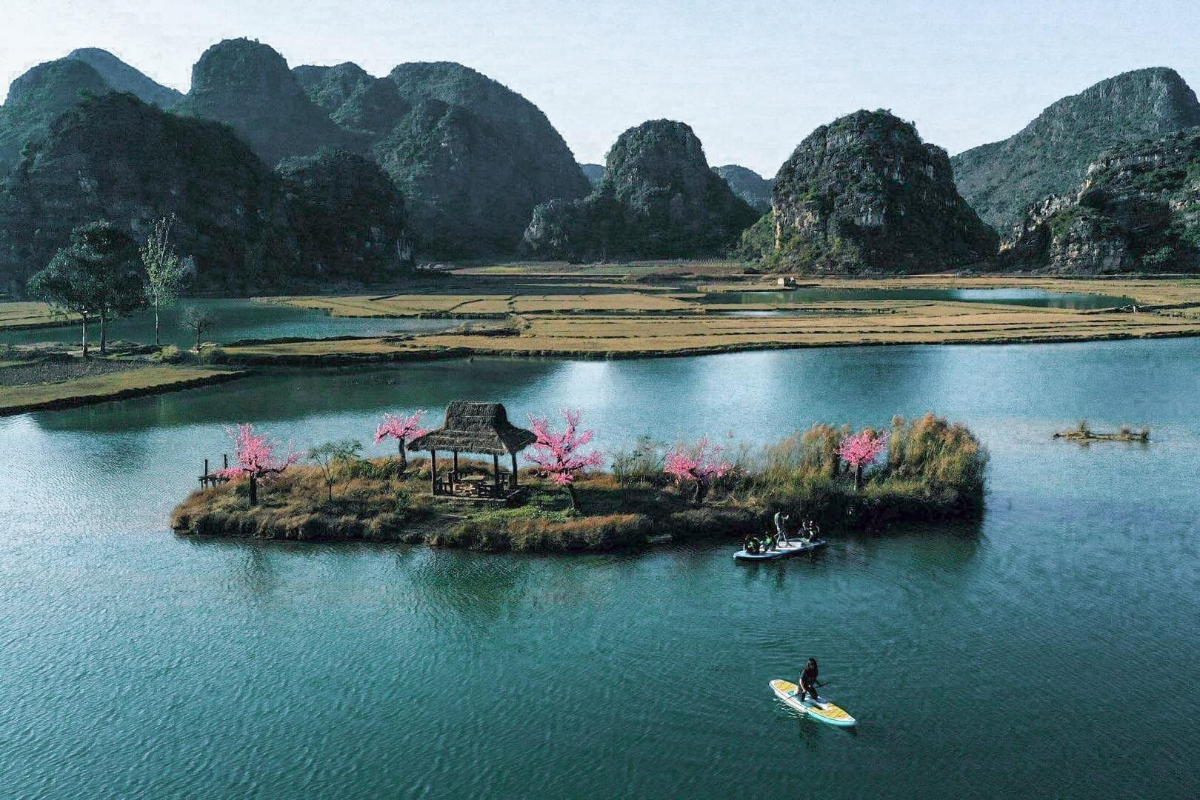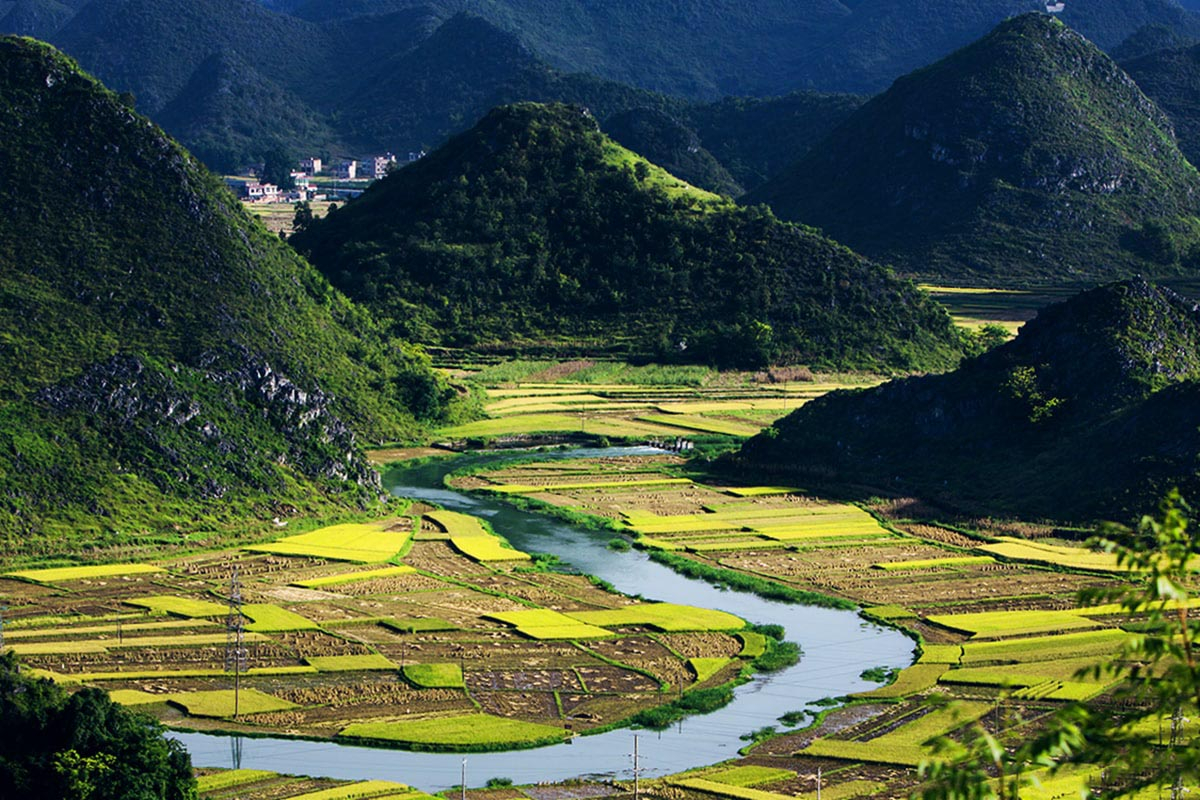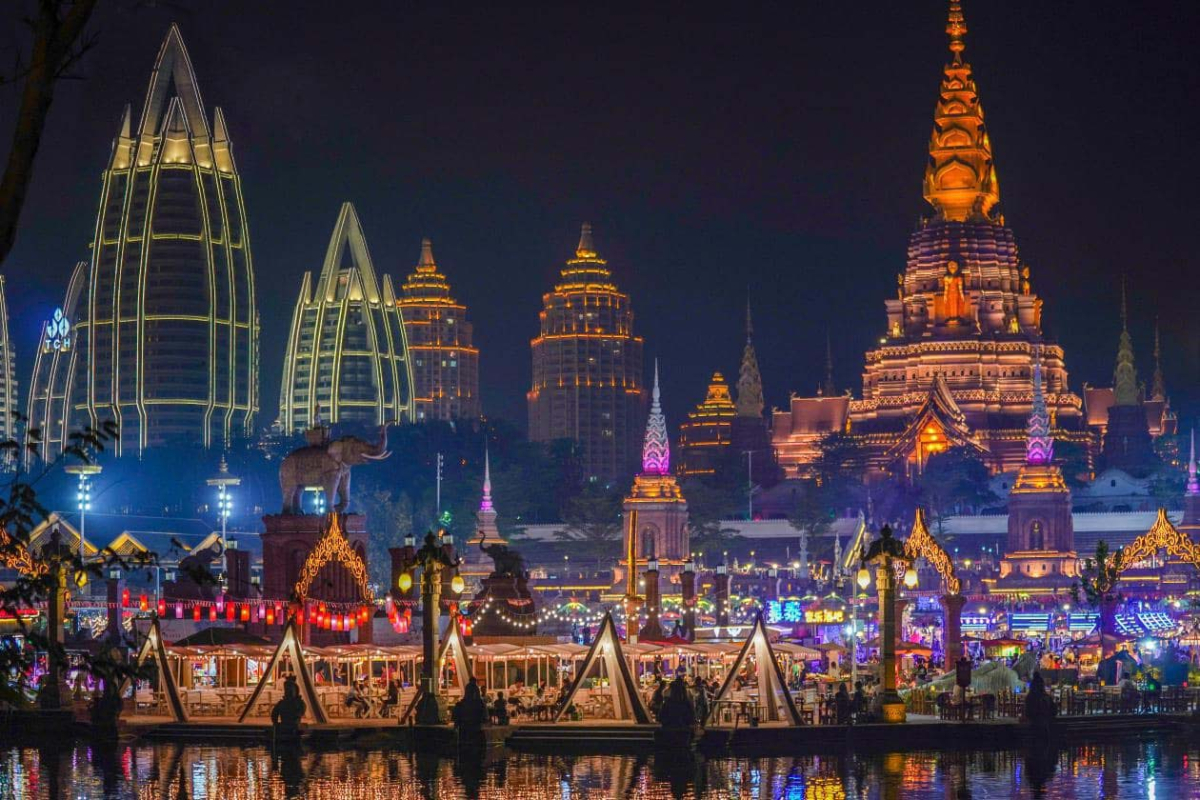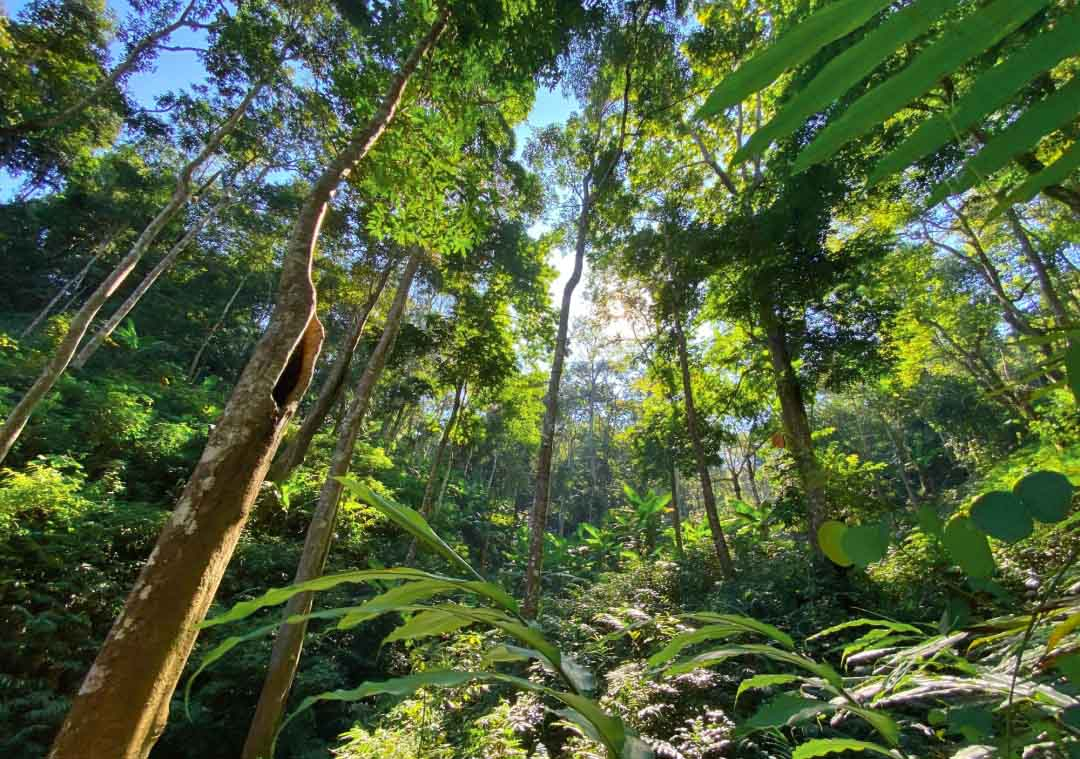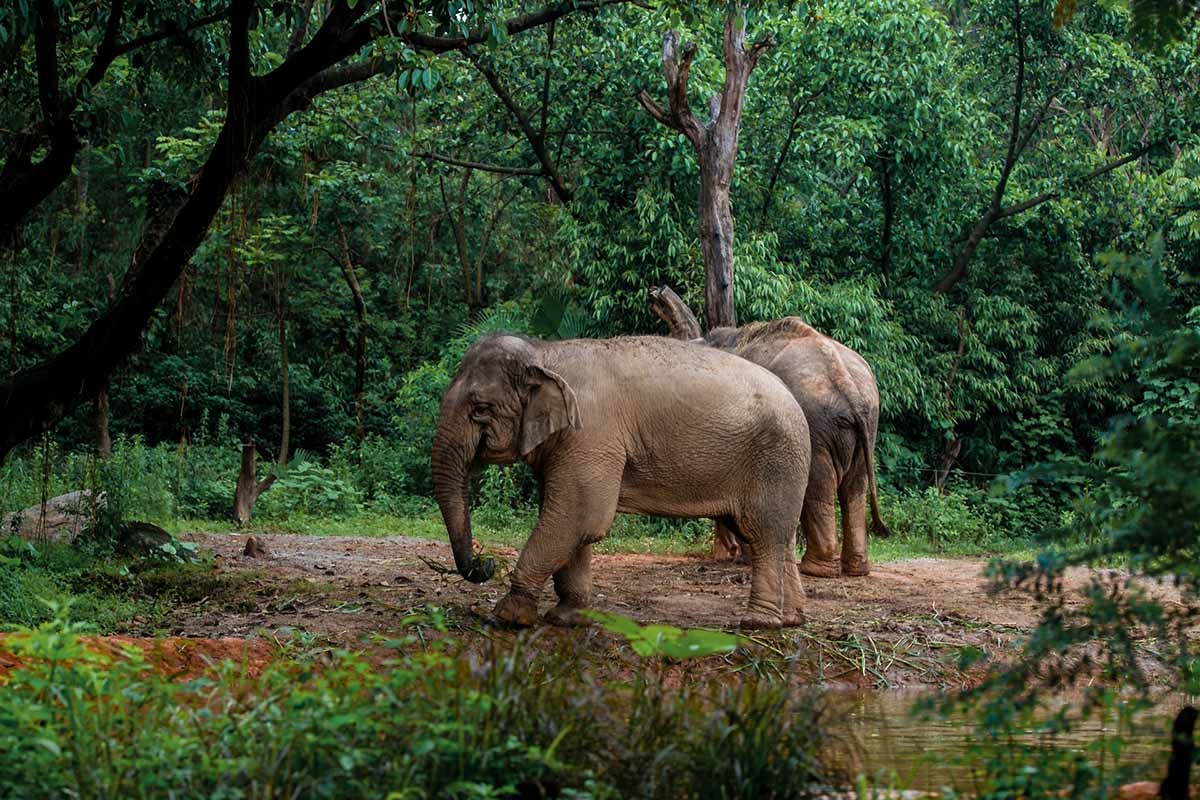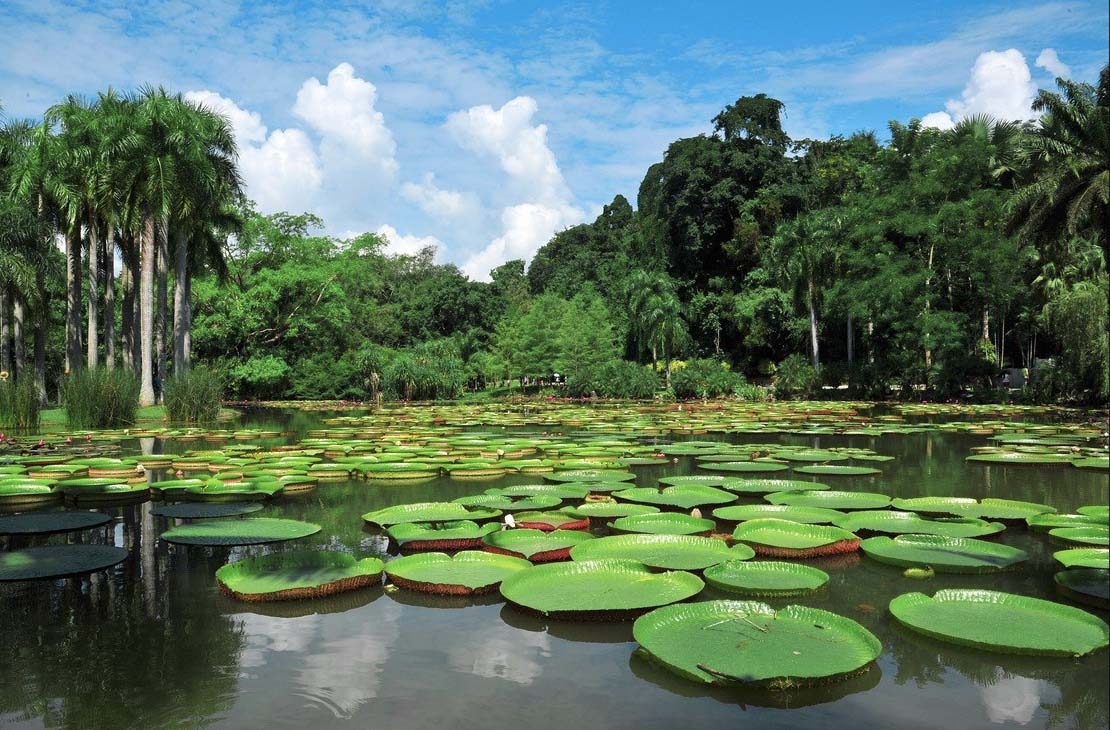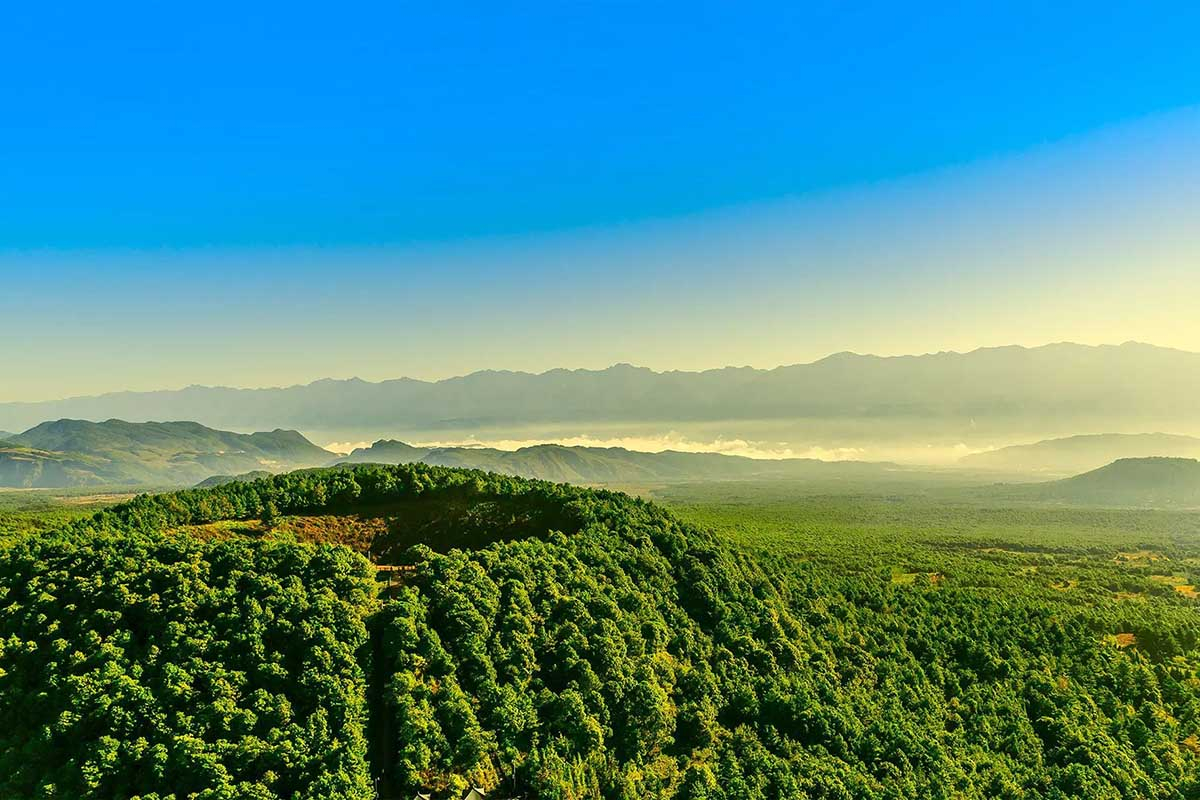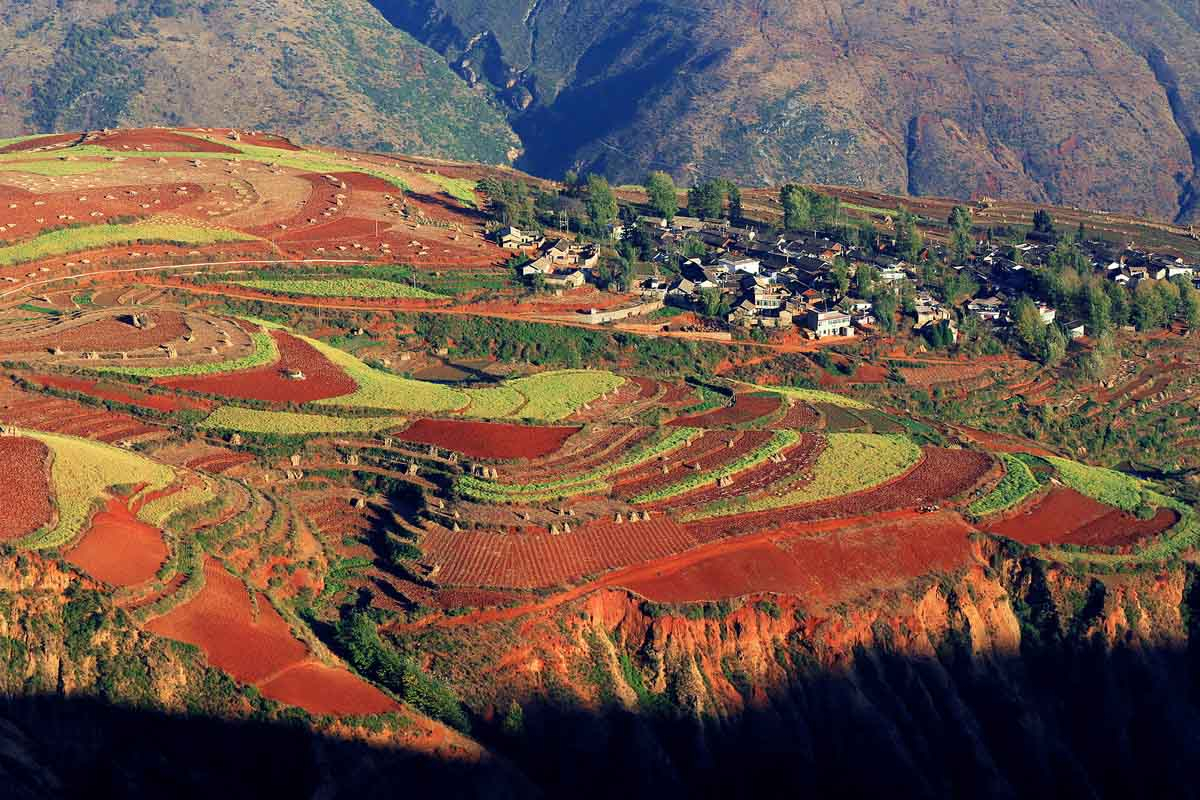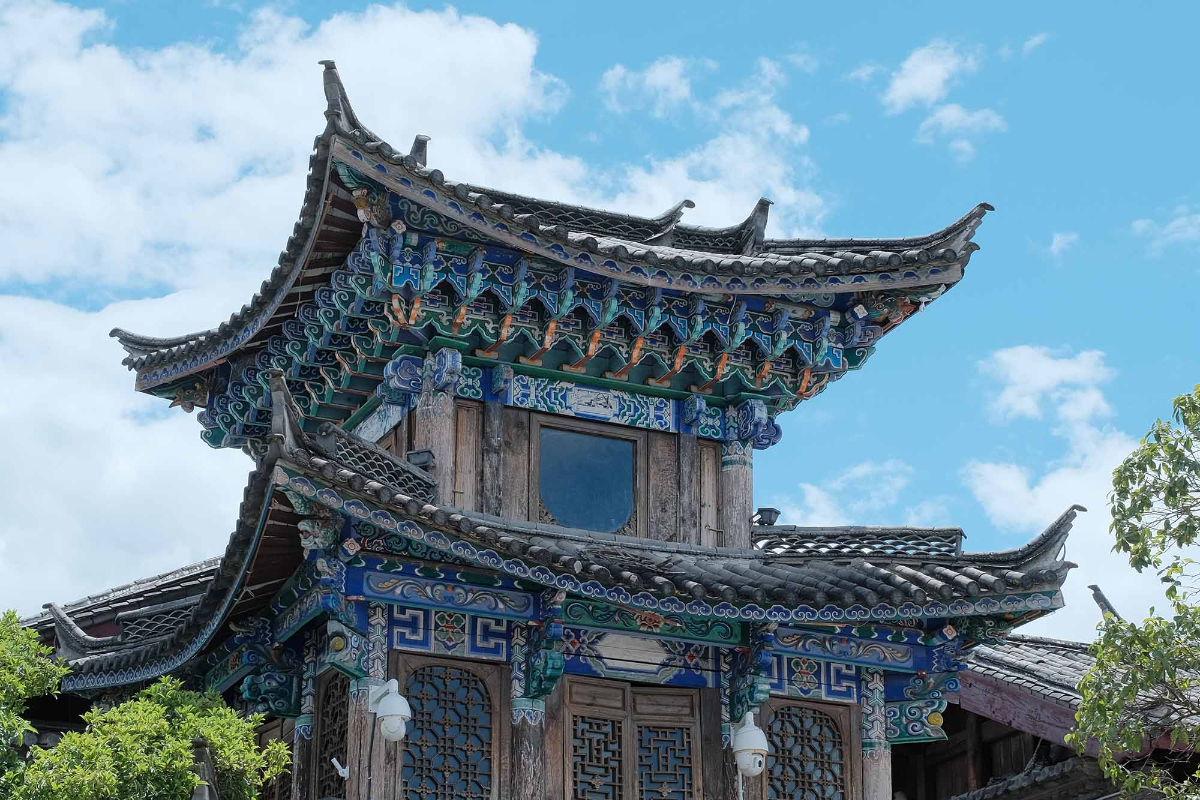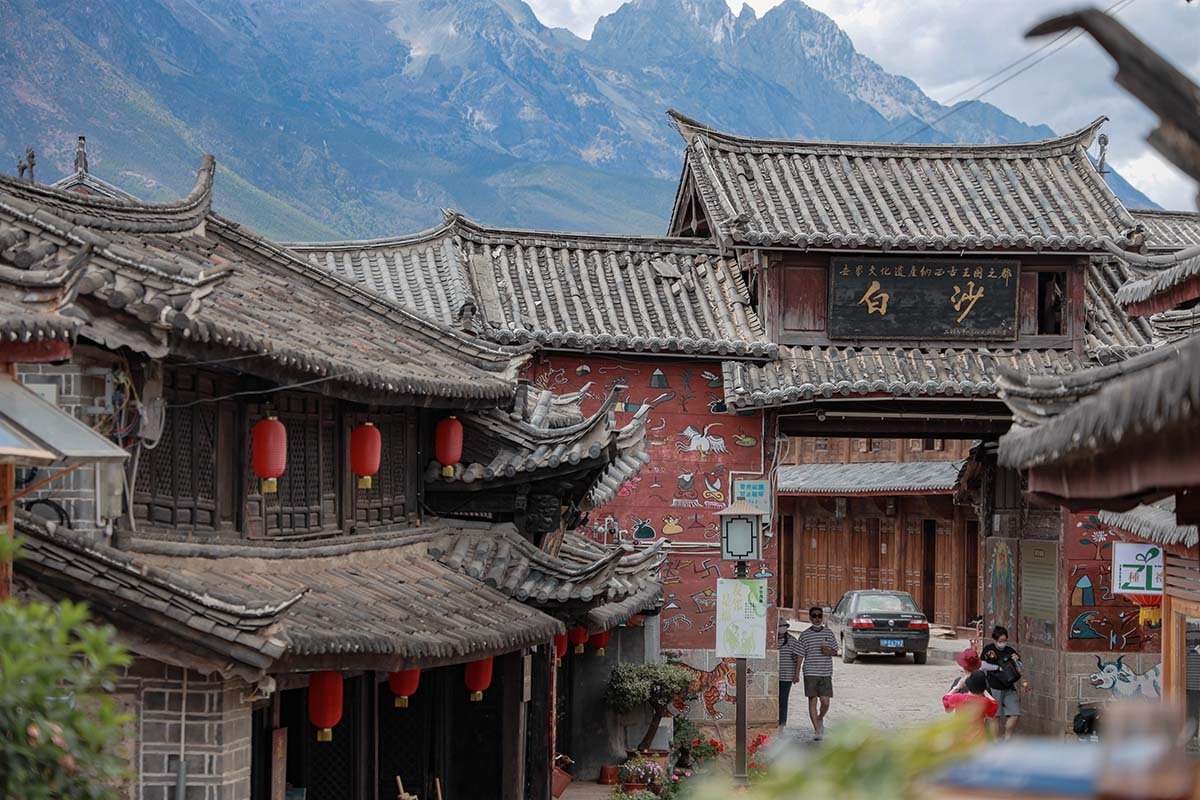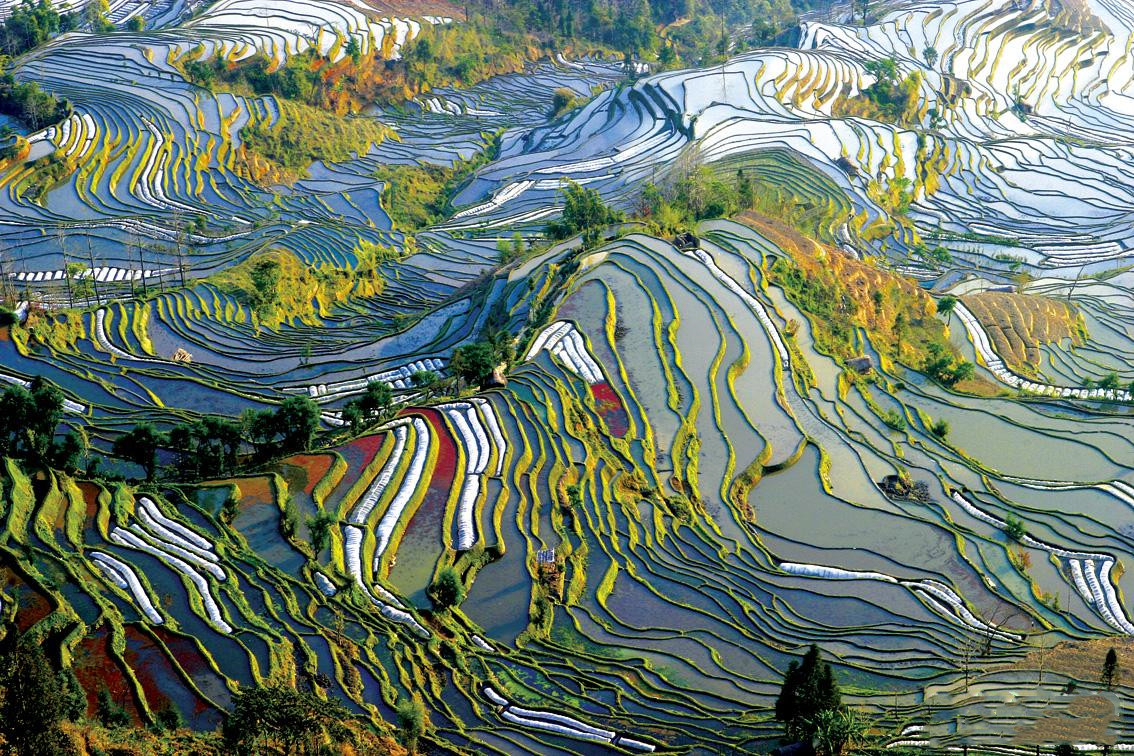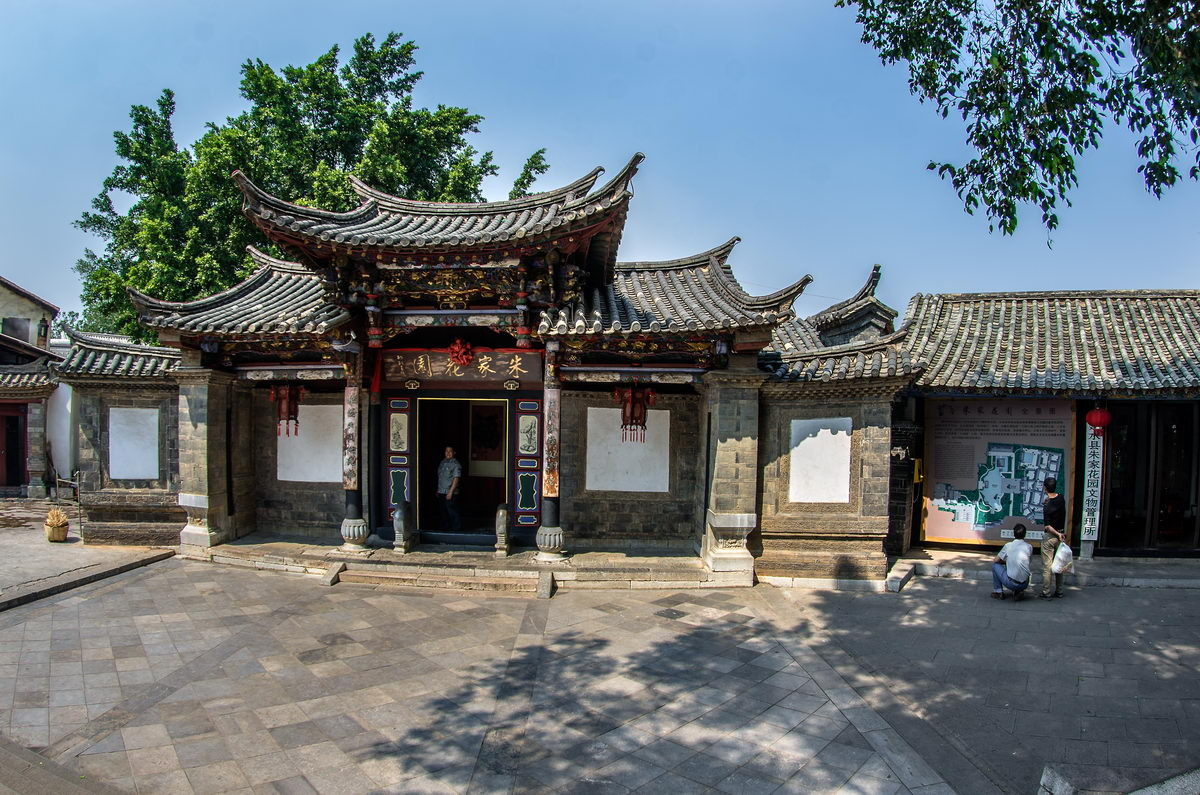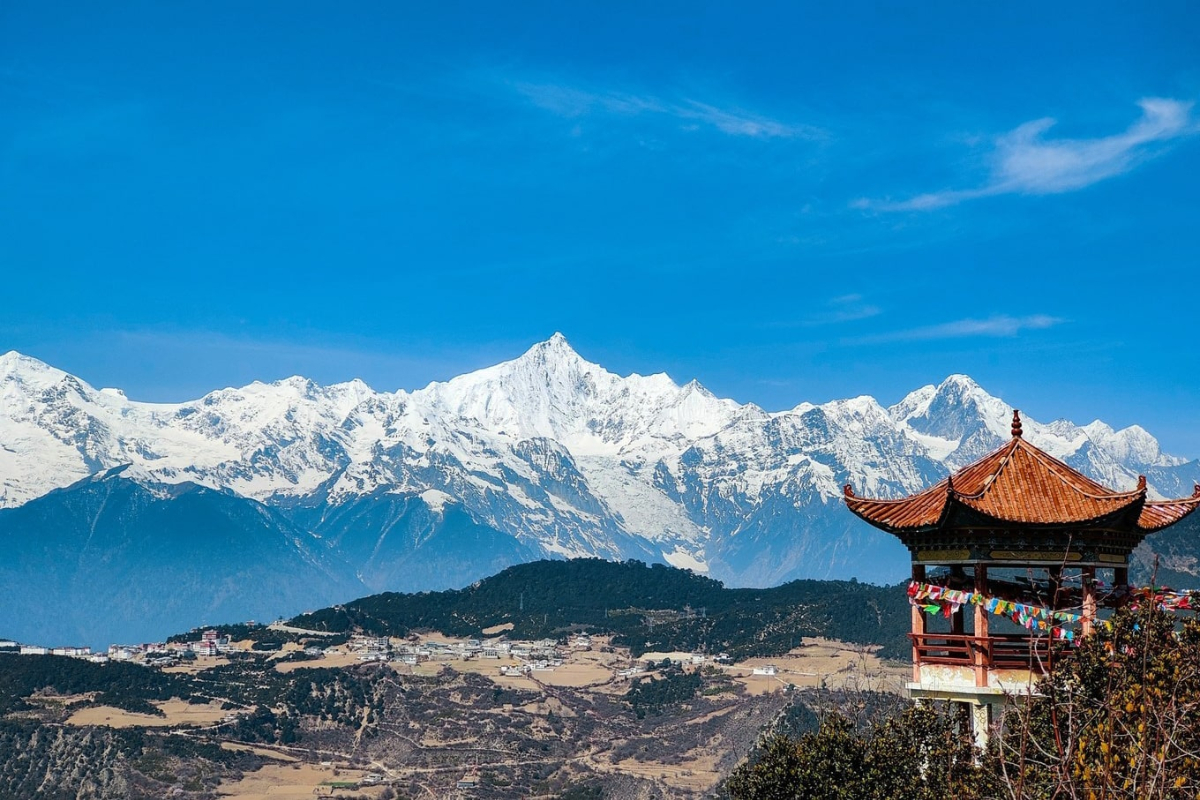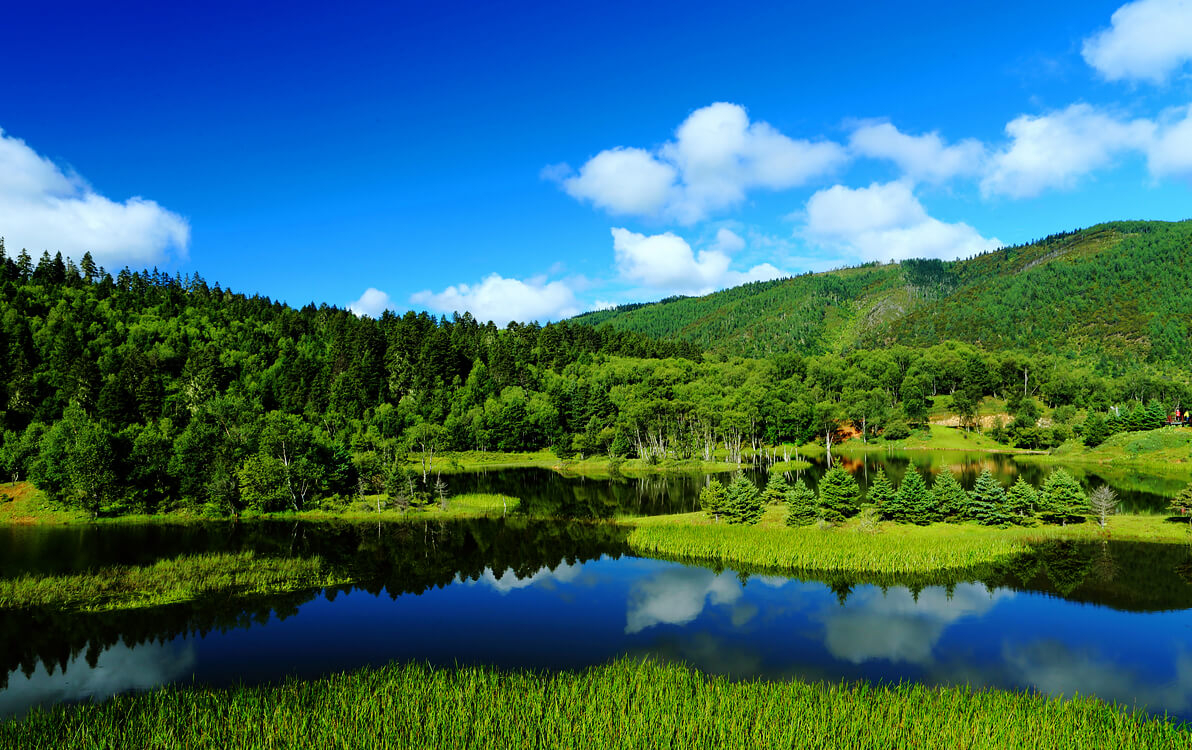Bamei Village
Chinese Name: 坝美村 (Bai Mei Cun)
Location: Bamei Town , Guangnan County, Wenshan Zhuang and Miao Autonomous Prefecture, Yunnan Province
Ticket: CNY180.00 include boat and sightseeing bus
Estimated tour time:1-3 hours
Recommended time to visit: All year round.
Nearby attractions: Laojun Mountain Forest Park, Seven Star Lake, Puzhehei, Dulong Ancient Town, Liujing Karst Cave, etc.
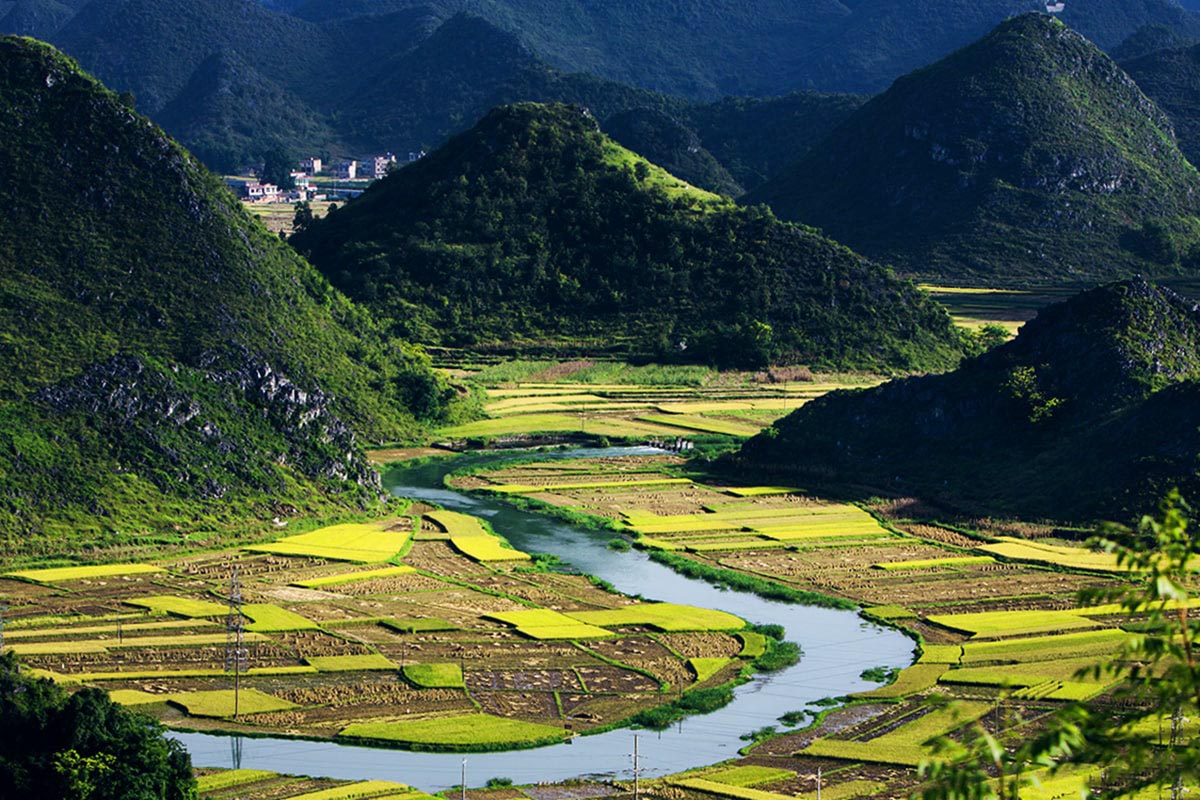
Bamei Village is located at the junction of Bada Township and Ake Township in the north of Guangnan County, Wenshan Zhuang Autonomous Prefecture, Yunnan Province, at the border of Yunnan Province and Guangxi Zhuang Autonomous Region, Guangnan is a typical karst area. The magnificent landscape around Bamei can be compared with the impressive and famous Karst landscape of Yangshuo in the Guangxi province. Bamei Village is surrounded by mountains. Before, entering and leaving the stockade, the main way is through two natural limestone karst water caves (each more than 800 meters long) in front of the village. Villagers either feel the rock wall to wade, or take bamboo raft, or canoeing or take a boat to get in and out of a 800 meters long dark tunnel. Now a 3.5 km long road has been built from the Xiaofa section of the road into the mountain to facilitate production and life.
Because of its remoteness and inconvenient transportation, it is difficult to communicate with the outside world. Bamei Village has been isolated from the outside world for a long time and is in a semi-closed state. With a long and delicate source and peach blossoms in full bloom, it is a heaven of peace and happiness, like in the poem of Tao Yuanming, it resembles Tao Yuanming's Xanadu (Tao was a great poet 352 or 365 – 427 AD, China's first pastoral poet). Therefore, it is called Xanadu.
The village is old and beautiful, tall banyan trees with luxuriant leaves, giant tree roots intertwine and lie bare on the ground, more than 100 families of the Zhuang ethnic group live in the buildings built one by one against the hill. Most of them belong to the aborigines Sha branch of the village. Walking into the village, women in black and blue skirts and embroidered shoes could be seen everywhere grinding in front of the artificial stone mill made by themselves, spinning and weaving in front of the ancient wooden spinning machine and embroidering on the homespun cloth dyed with indigo grass collected from mountains. Men carrying huge racks of firewood on their backs, while children and the elderly carrying bamboo buckets to the springs to fetch water and store in homemade stone jars for their families to drink.
Bamei Village still retains the rich folk activities of the Zhuang traditional culture.
Every year according to the season such activities are held: dragon worship, ancestor worship, fishing, singing, glutinous rice festival, cockfighting, playing lion, kicking leaf ball, kicking shuttlecock and so on. Weddings and funerals are strictly regulated according to customs and etiquette. Traditional festivals are held according to the time, such as Xiao Nian, March 3, etc., with unique folk activities, promoting the ancient symbols of Zhuang culture.
Bamei folk songs include creation songs, historical songs, love songs, labor songs, etc., dances include sand opera and ancient weapon dance, etc. Literature has myths and legends, legends of mountains and landscapes, legends of Nong Zhigao uprising and so on.
In farming throughout their generations, Bamei villagers still retain the self-sufficient small-scale peasant economy society, vividly embodies the Zhuang farming society male plow female weave, talking, harmonious neighborhood its pastoral sentiment, their current production way of life, customs, beliefs, worship, are well preserved Zhuang old traditional culture features.
- HOTEST
- RECOMMEND
